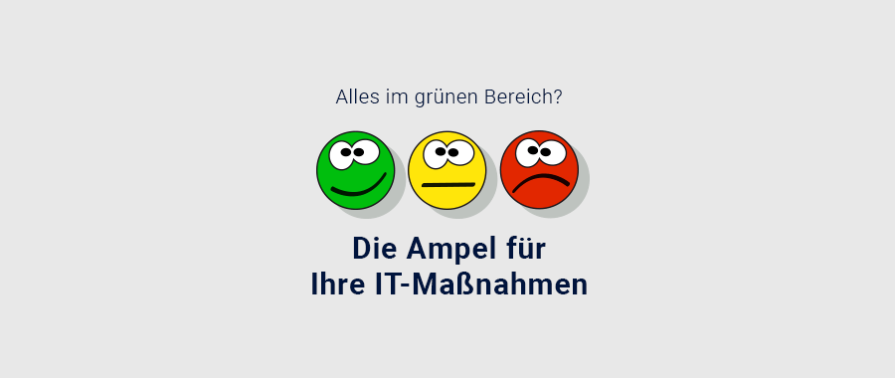
Is everything green? In 4 steps to the IT action plan
Many customers do not even know where to start when assessing their IT, how to identify possible measures and how to create an IT plan of measures. As an IT service provider, we have long recognized that there is generally no standard for IT structuring and have developed our itpilot® methodology for this purpose. A standardized IT service list is thus available for the first time, with which even small and medium-sized companies can record and evaluate their IT services without much effort.
Step 1: Carry out an IT status analysis based on IT services
The web-based application itpilot® records all IT services as part of an actual recording based on a standardized list of around 250 IT services that we have created based on experience in many projects. This means that no IT service is forgotten when recording.
An example: one of our customers assumed that he had a maximum of 20 IT services in the company. In the end there were over 60 - at a company with around 100 employees at 3 locations. It was not at all clear to him which processes in his company all require IT support or are dependent on IT - right down to time recording, the franking machine, etc.
Step 2: Collect IT key figures
IT key figures such as technical information, costs and human resources are then assigned to the IT services. Rough guidelines are sufficient in many areas. For example, no accounting figures are needed to allocate costs and resources. This makes it clear what which IT service does at what cost and with what resources.
Step 3: Consider IT service dependencies
Clear itpilot® evaluations make the importance of every IT service for the company transparent. It also becomes clear, for example, what effects can be expected in the event of a failure. The interdependencies between the IT services are already planned. Because only if you can see at a glance how the IT is intertwined can you also see where it is burning.
For example, this could be a telephone system at the main location, on which three secondary locations are dependent. In the event of a failure of the central system, all locations could no longer be reached by telephone. Many companies are not even aware of such connections.
Step 4: identify weak points, prioritize measures, create an IT action plan
itpilot® not only makes the weak points transparent, but also clearly shows with its traffic light system which applications or IT components are particularly critical and where action is required. "Red" IT services require immediate action. The yellow ones require an action, but this is not time-critical for the time being. The company is on the safe side with the green IT services.
An IT action plan , developed on such a common basis, helps to avoid unnecessary use of resources and time and ultimately reduces frustration for everyone involved. The communication between customer and IT service provider receives a completely new basis because both are talking about the same thing. In this way, an external service provider can really act as a trusted advisor or even as a virtual CIO and prioritize the resulting measures in line with the budget.
In this way, companies can further develop their IT in a meaningful way and make it future-proof.
As a senior IT consultant , David Hofstätter supports our customers with the IT status analysis using itpilot® in order to identify weaknesses in IT and develop a prioritized action plan.
(Image source: AdobeStock_48823323)





